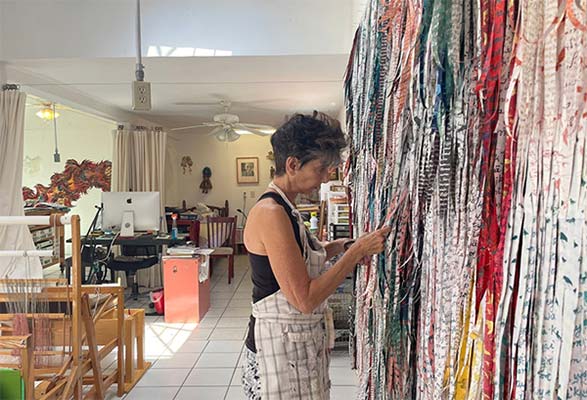Inside the Studio with Deborah Kruger
Inside the Studio offers a behind-the-scenes peek into the work environments of WTP artists, as well as insight into their creative process within these resonate spaces. See Deborah Kruger’s work in WTP Vol. IX #10.
By Jennifer Nelson, WTP Feature Writer
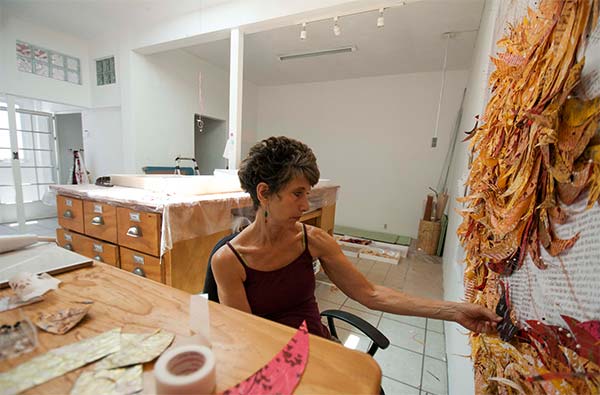
Deborah Kruger raves about the benefits of a home-based studio in Chapala, Mexico. There, she’s found affordable workers to help with her installations, and over the years, her studio has undergone several renovations, including an adjoining production studio for silk-screening. “Living in Mexico has definitely enabled me to make large-scale work and run the studio required for that work. Having these resources allows me to think big and imagine and produce the work of my dreams.” In the lakeside village, she employs five to eight people, including her website designer/social media guru, fabricator and full-time assistant, and enjoys the community they have created together.
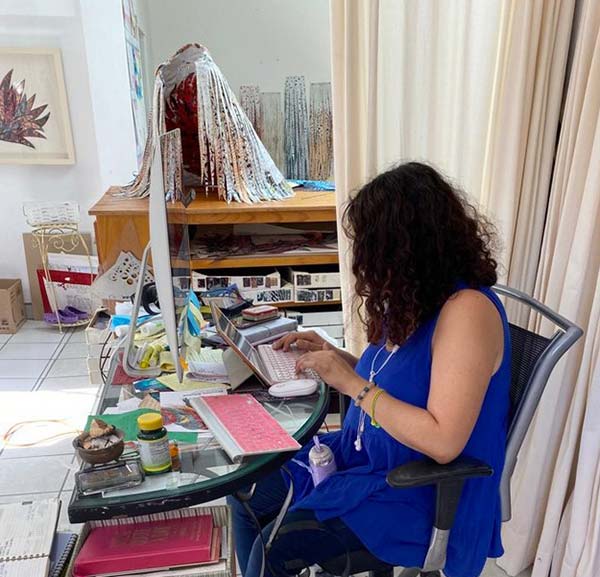
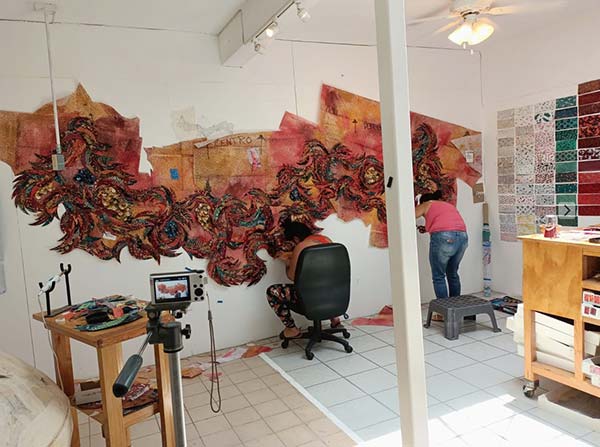
It was in 2010 when Kruger moved to Mexico from Massachusetts, though some art books, older artwork, and furniture found a new home in North Carolina where Kruger has family, in a church which had converted unused classrooms into artist studios. This second studio is used as a staging area for shipping and receiving works for shows in the United States.
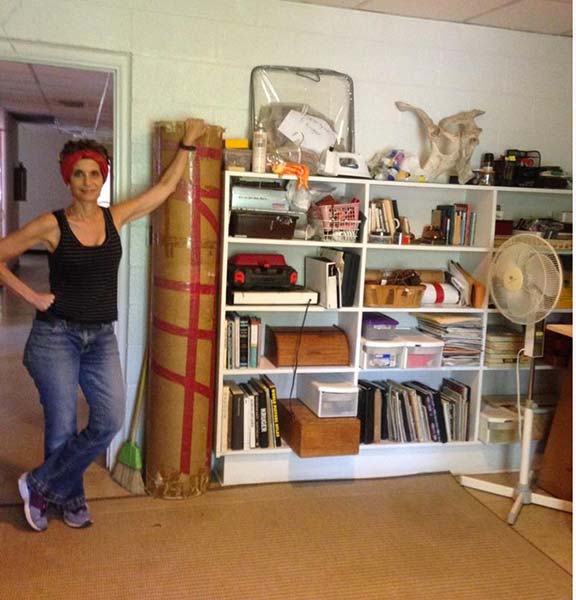
Kruger actually creates her own feathers for her textile paintings, sculptures, and installations as can be seen in WTP Vol. IX #10. They are cut from fused recycled plastic bags that are silk-screened from her own drawings of endangered birds; the drawings are condensed into silhouettes in Photoshop for 10” x 14” prints. The finished designs are emailed to a shop in Guadalajara that produces the silk screen. Next, she and her team overprint with text from endangered languages such as Tzotzil, Yakme, Shorthand, and Yiddish, whose last living speakers/users are in steep decline.
After trimming, she sends the printed plastic pages out to a neighborhood sewer who sews abstract designs onto each page which eventually are sewn together into long lengths. Once these are sewn, Kruger arranges three different designs together, and sends them to the production studio for cutting into long tail feathers. These feathers then become her painting palette.
She works on three to four pieces at the same time; large, mural-size pieces take a long time to build and require numerous print runs, and the entire process for making feathers from start to finish can take two weeks.
Using her prior prior training in wallpaper and textile design, the plastic feathers become embedded as a layered narrative that addresses the global consumerism driving the loss of both bird and human habitat. “I write down ALL my ideas so I don’t forget any. I don’t make all my ideas, but there is never a lack of ideas. Only a lack of time to make them!”
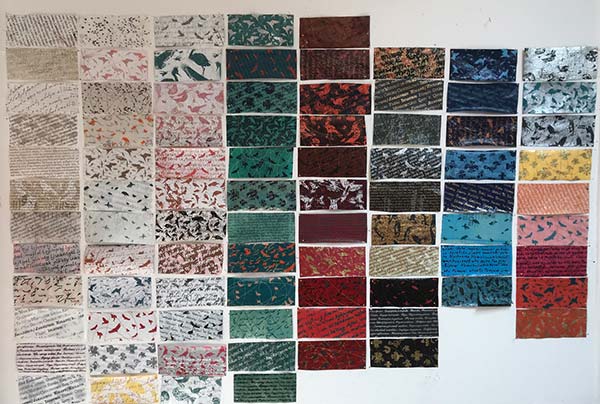
Kruger works at least six days week. By Sunday, her husband tries to entice her out of the studio with a motorcycle ride, a movie, or get-together with friends. Her studio days begin with working out or yoga, going for a walk along the lake, and listening to a podcast. Some weeks require more time on the computer, writing grants, proposals, and residency applications, with little time to make art. “These activities are important for my career and sanity,” said Kruger.
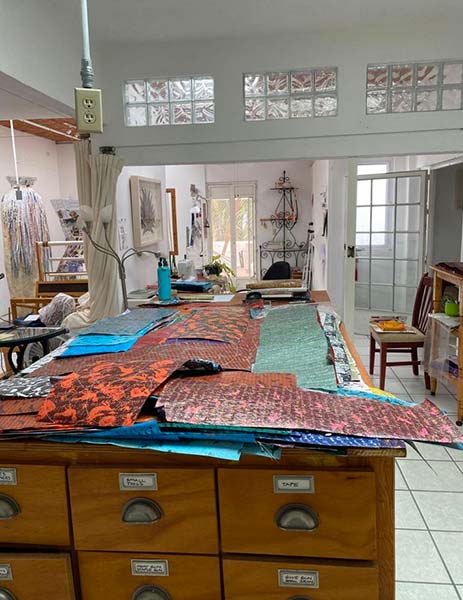
Kruger is always preparing for exhibitions, which are scheduled years in advance. As deadlines draw closer, there are weeks of frantic production, although in general, she prefers to work steadily, not motivated by deadlines as much as by the quality of the work. But she feels it’s also important to talk about how artists—few of whom earn a living from their artwork—support their studios. Kruger estimates she spends $25,000 to $30,000 annually, depending on how many exhibitions are scheduled. Her Social Security payments cover 60% of her expenses. For the balance, she’s constantly fundraising, which includes offering a patronage program similar to Patreon; offering a merchandise line of products; receiving money from grants; and of course, selling her work—a recent show of hers was featured in over twenty-five international magazines, blogs, and newspapers, and she’s preparing for four upcoming museum exhibitions. “I am feeling optimistic about the financial ship turning around this coming year,” she said. “Like high-performance athletes, being a successful visual artist requires consistent practice, creative marketing strategies, and a dedicated positive mental frame of mind.”
Click here to read more Inside the Studio features.
Copyright 2022 Woven Tale Press LLC. All Rights Reserved

